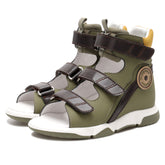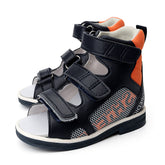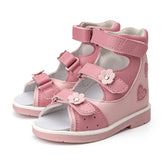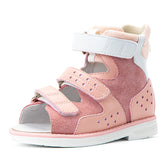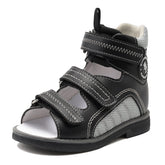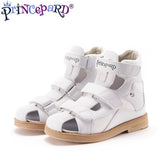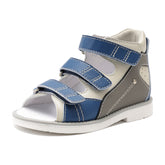Understanding O-Shaped and X-Shaped Legs in Children: Causes, Risks, and Effective Treatments
What Are In-Toeing and Out-Toeing?
In-toeing and out-toeing are common gait abnormalities observed in children, where the feet either point inward (in-toeing) or outward (out-toeing) when walking. While many cases resolve naturally with growth, persistent or severe cases may require intervention to prevent long-term posture and mobility issues.
1. What Is In-Toeing? (Pigeon-Toed Gait)
Definition: In-toeing, often called pigeon-toed walking, occurs when a child's feet turn inward while walking or running.
Causes of In-Toeing
- Metatarsus Adductus: A curved foot shape where the front part of the foot bends inward.
- Internal Tibial Torsion: The shinbone (tibia) is twisted inward, causing the feet to turn inward.
- Femoral Anteversion: The thigh bone (femur) has excessive inward rotation, leading to in-toeing.
Symptoms of In-Toeing
- Feet point inward while walking or running.
- Increased frequency of tripping or stumbling.
- Uneven shoe wear, with excessive wear on the inner soles.
- Difficulty balancing, leading to instability in movement.
2. What Is Out-Toeing? (Duck-Footed Gait)
Definition: Out-toeing, commonly known as duck-footed walking, is when a child's feet point outward while standing or walking.
Causes of Out-Toeing
- External Tibial Torsion: The shinbone (tibia) rotates outward.
- Femoral Retroversion: The thigh bone (femur) is twisted outward, causing the legs to turn outward.
- Hypermobile Joints: Loose ligaments and joints make the feet naturally turn outward.
Symptoms of Out-Toeing
- Feet turned outward during walking or running.
- Instability or discomfort when standing for long periods.
- Increased strain on the hips, knees, and ankles.
- Uneven shoe wear, with excessive wear on the outer soles.
3. Risks Associated with In-Toeing and Out-Toeing
If left untreated, severe in-toeing and out-toeing can lead to:
- Joint Misalignment: Affecting the knees, hips, and spine.
- Postural Issues: Contributing to poor walking habits and overall balance problems.
- Pain and Fatigue: Due to improper weight distribution on the feet.
- Increased Risk of Injury: Children with gait abnormalities are more prone to falls and joint stress.
4. How to Correct In-Toeing and Out-Toeing
1. Orthopedic Shoes for Kids
Wearing children's orthopedic shoes can help stabilize the feet and promote proper alignment. Orthopedic shoes for in-toeing provide structured support to gradually correct foot positioning, while out-toeing correction shoes focus on controlling excessive outward rotation.
2. Foot Exercises and Physiotherapy
Targeted stretching and strengthening exercises can improve muscle balance and alignment. Exercises such as toe stretches, hip rotations, and balance training can be beneficial.
3. Braces or Orthotics
For moderate to severe cases, using custom orthotics or braces can provide additional support to realign the feet.
4. Medical Intervention
In extreme cases where natural correction fails, consultation with a specialist may be necessary. Surgical options are rarely needed but may be considered for severe tibial torsion or femoral anteversion.
5. Why Choose PrincePard Orthopedic Shoes?
At PrincePard, we specialize in kids’ orthopedic shoes designed to address foot misalignment issues, including in-toeing and out-toeing. Our shoes feature:
High-arch corrective insoles for improved foot posture.
Ankle stabilization to prevent excessive inward or outward foot rotation.
Anti-slip soles for enhanced balance and safety.
Scientifically backed orthopedic design, developed by experts with over 30 years of research.
By choosing orthopedic correction shoes for kids, parents can help ensure their children develop healthy walking patterns and avoid long-term complications.
Explore our collection at www.princepard.net to find the best solution for your child’s foot health!
